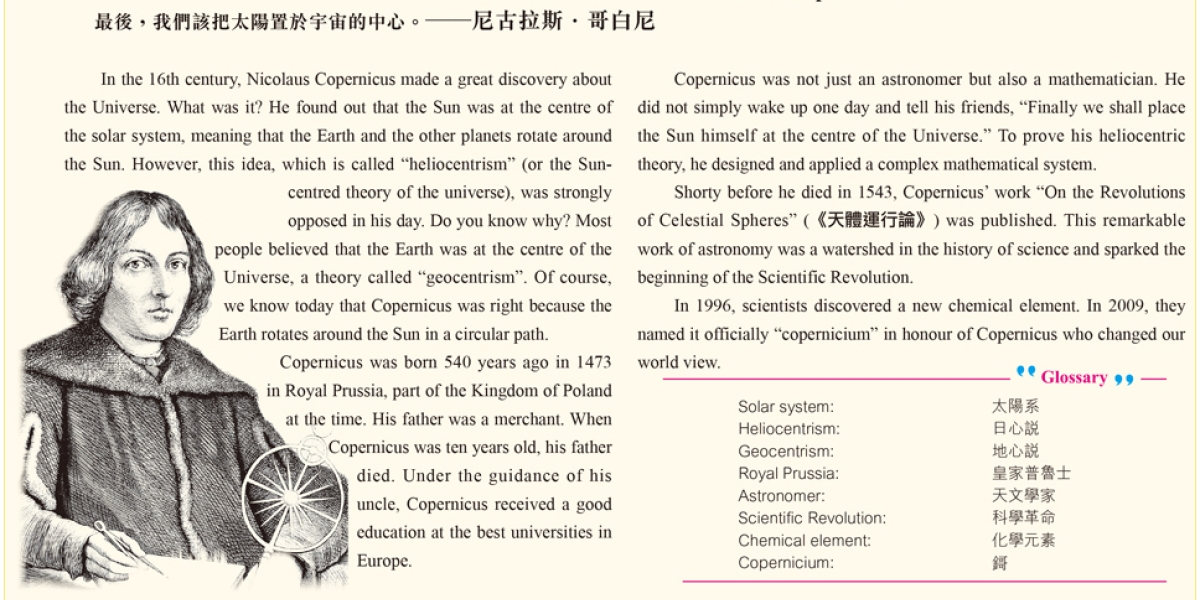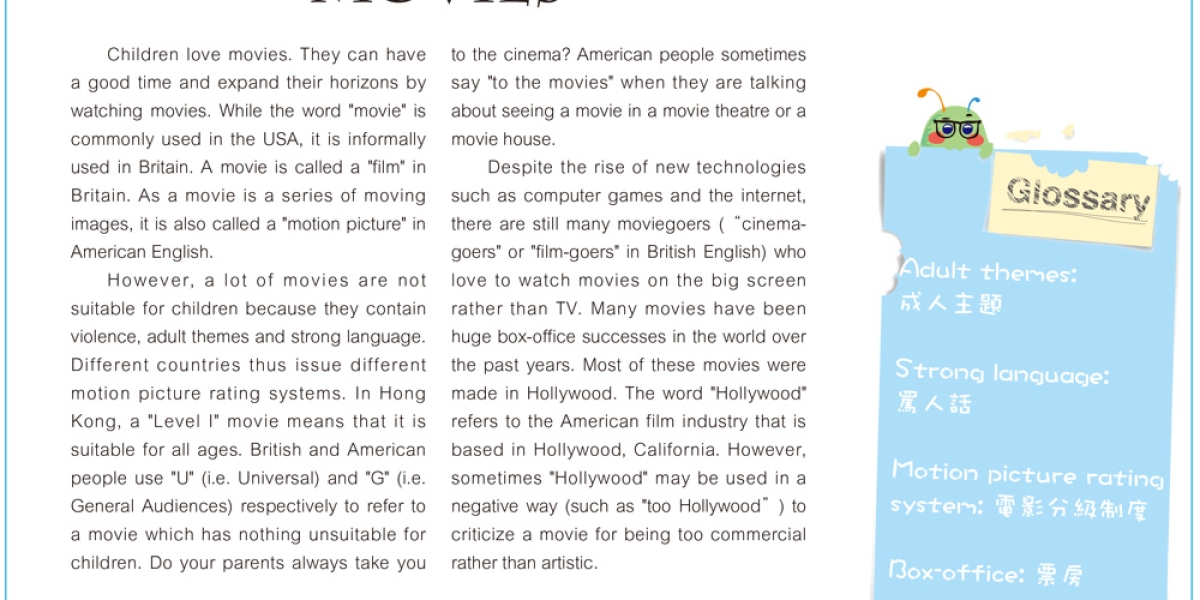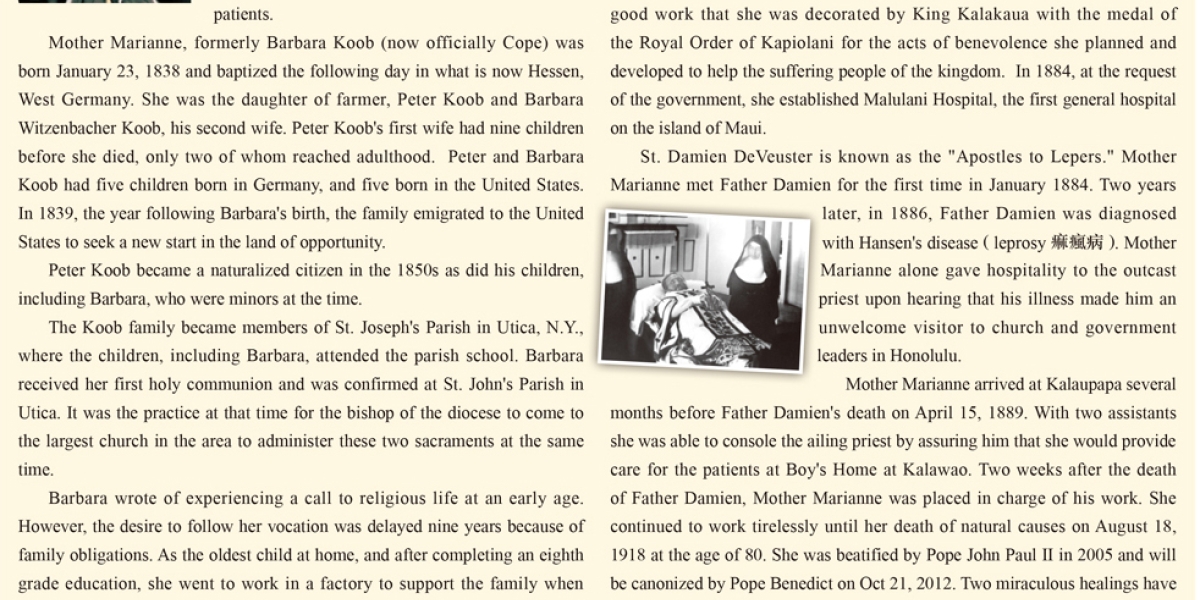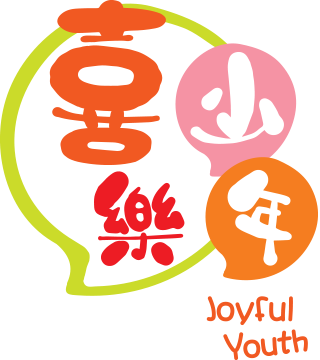昔日文章


Neither East Nor West
2013.09.21
Blessed Pope John XXIII And Pope John Paul II
Later this month, the Vatican will announce the date when the two former Popes will be canonized.
Most of you are too young to remember Pope John XXIII. He died in 1963. I had heard of him but I did not pay much attention since I was not Catholic then. Pope Paul VI succeeded him. He came to Hong Kong in December 1970. But by then I had already left for the United States.
Pope John XXIII (23rd) was elected pope on 28 October 1958 at the age of 77. He is responsible for calling the Second Vatican Council ( 梵蒂岡第二屆大公會議)and is known for his encyclical Pacem in Terris – Peace on Earth(《和平通諭》). He inaugurated t h e S e c o n d Va t i c a n Council but died before its completion. This Council, commonly called Vatican II (2), abbreviated to VAT II, addressed many of the needed issues facing a post Second World War world. The world was suffering from the devastation of the war and reacted by rejecting the traditional answers of politicians and governments. Communism was on the rise and God and religion were blamed. The Council reemphasized the role that the Holy Spirit, the Spirit of Hope, plays in our daily lives. We are in a global world where the needs of each other are more important than nationalistic sentiments. The power play between governments that brought about the devastation of the world wars has to be replaced by a love and care for individual persons. The Council addressed the role of the Church in this time of history in the world. The message of Jesus to love one another remains the only valid rule in our daily lives, especially in a time of pain.
It is interesting to notice that a similar message of love came into focus in the rock music of the 1960’s with the Beatles and other bands, except that they advocated the abandoning of all structures and systems, religious and cultural, for one of freedom, meaning no restrictions whatsoever. The message of the Council was mostly ignored and the world plunged into the chaos of false freedom and irresponsibility. Morality was determined by personal values, whatever that may be. Pope John Paul II and Pope Emeritus Benedict will later condemn it as “moral relativism.”
When Pope John Paul II inherited the responsibility of leading the Church, he came from the personal experience of having lived through the Second World War and his country being occupied by the Soviet Union. His message of hope and “solidarity” when he was bishop in his own country of Poland prepared him to guide the Church to confront the false promises of communism and other modern ideologies. His own pain in losing his parents and witnessing the cruelty of war led him to dwell deeply into the mystery of pain and the freedom that comes only in the Cross of Jesus. This was nothing new to us Catholics because it is consistently witnessed by the saints and their writings. But to the world, it seemed such a breath of fresh air. His personality and message for personal human dignity found a home, particularly in the young people, which he repeatedly emphasized during the World Youth Days which he started in 1986 in Rome. In his later years, when he was weakened by his illness, he gave witness to the courage and dignity of aging. His death was a true statement of dying with dignity.
This is a very brief overview of history that shaped these two popes. I am sure many more can be and should be said. Maybe another time.


Famous Quotations
2013.04.14
Finally we shall place the Sun himself at the centre of the Universe. — Nicolaus Copernicus | 最後,我們該把太陽置於宇宙的中心。──尼古拉斯.哥白尼
In the 16th century, Nicolaus Copernicus made a great discovery about the Universe. What was it? He found out that the Sun was at the centre of the solar system, meaning that the Earth and the other planets rotate around the Sun. However, this idea, which is called “heliocentrism” (or the Sun-centred theory of the universe), was strongly opposed in his day. Do you know why? Most people believed that the Earth was at the centre of the Universe, a theory called “geocentrism”. Of course, we know today that Copernicus was right because the Earth rotates around the Sun in a circular path.
Copernicus was born 540 years ago in 1473 in Royal Prussia, part of the Kingdom of Poland at the time. His father was a merchant. When Copernicus was ten years old, his father died. Under the guidance of his uncle, Copernicus received a good education at the best universities in Europe.
Copernicus was not just an astronomer but also a mathematician. He did not simply wake up one day and tell his friends, “Finally we shall place the Sun himself at the centre of the Universe.” To prove his heliocentric theory, he designed and applied a complex mathematical system.
Shorty before he died in 1543, Copernicus’ work “On the Revolutions of Celestial Spheres” (《天體運行論》) was published. This remarkable work of astronomy was a watershed in the history of science and sparked the beginning of the Scientific Revolution.
In 1996, scientists discovered a new chemical element. In 2009, they named it officially “copernicium” in honour of Copernicus who changed our world view.
Solar system: 太陽系
Heliocentrism: 日心說
Geocentrism: 地心說
Royal Prussia: 皇家普魯士
Astronomer: 天文學家
Scientific Revolution: 科學革命
Chemical element: 化學元素


English Around the World
2012.11.11
Movies
Children love movies. They can have a good time and expand their horizons by watching movies. While the word "movie" is commonly used in the USA, it is informally used in Britain. A movie is called a "film" in Britain. As a movie is a series of moving images, it is also called a "motion picture" in American English.
However, a lot of movies are not suitable for children because they contain violence, adult themes and strong language. Different countries thus issue different motion picture rating systems. In Hong Kong, a "Level I" movie means that it is suitable for all ages. British and American people use "U" (i.e. Universal) and "G" (i.e. General Audiences) respectively to refer to a movie which has nothing unsuitable for children. Do your parents always take you to the cinema? American people sometimes say "to the movies" when they are talking about seeing a movie in a movie theatre or a movie house.
Despite the rise of new technologies such as computer games and the internet, there are still many moviegoers (“cinema-goers" or "film-goers" in British English) who love to watch movies on the big screen rather than TV. Many movies have been huge box-office successes in the world over the past years. Most of these movies were made in Hollywood. The word "Hollywood" refers to the American film industry that is based in Hollywood, California. However, sometimes "Hollywood" may be used in a negative way (such as "too Hollywood”) to criticize a movie for being too commercial rather than artistic.
Glossary
Adult themes:成人主題
Strong language:罵人話
Motion picture rating system:電話分級制度
Box-office:票房
Hollywood:荷里活


Neither East Nor West
2012.10.21
Saint Marianne Cope of Molokai
Mother Marianne led a group of sisters from New York to the Hawaiian Islands in 1883 to establish a system of nursing care for leprosy patients.
Mother Marianne, formerly Barbara Koob (now officially Cope) was born January 23, 1838 and baptized the following day in what is now Hessen, West Germany. She was the daughter of farmer, Peter Koob and Barbara Witzenbacher Koob, his second wife. Peter Koob's first wife had nine children before she died, only two of whom reached adulthood. Peter and Barbara Koob had five children born in Germany, and five born in the United States. In 1839, the year following Barbara's birth, the family emigrated to the United States to seek a new start in the land of opportunity.
Peter Koob became a naturalized citizen in the 1850s as did his children, including Barbara, who were minors at the time.
The Koob family became members of St. Joseph's Parish in Utica, N.Y., where the children, including Barbara, attended the parish school. Barbara received her first holy communion and was confirmed at St. John's Parish in Utica. It was the practice at that time for the bishop of the diocese to come to the largest church in the area to administer these two sacraments at the same time.
Barbara wrote of experiencing a call to religious life at an early age. However, the desire to follow her vocation was delayed nine years because of family obligations. As the oldest child at home, and after completing an eighth grade education, she went to work in a factory to support the family when her father became an invalid. Only when her younger siblings could care for themselves did Barbara feel free to enter the convent. She did so one month after her father's death in the summer of 1862. She was 24 years of age.
Barbara entered the Sisters of Saint Francis in Syracuse, N.Y. on November 19, 1862.
On November 8, 1883, Mother Marianne left with 6 sisters to work in Hawaii. In her first two years on the island, Mother Marianne did so much good work that she was decorated by King Kalakaua with the medal of the Royal Order of Kapiolani for the acts of benevolence she planned and developed to help the suffering people of the kingdom. In 1884, at the request of the government, she established Malulani Hospital, the first general hospital on the island of Maui.
St. Damien DeVeuster is known as the "Apostles to Lepers." Mother Marianne met Father Damien for the first time in January 1884. Two years later, in 1886, Father Damien was diagnosed with Hansen's disease ( leprosy 痲瘋病). Mother Marianne alone gave hospitality to the outcast priest upon hearing that his illness made him an unwelcome visitor to church and government leaders in Honolulu.
Mother Marianne arrived at Kalaupapa several months before Father Damien's death on April 15, 1889. With two assistants she was able to console the ailing priest by assuring him that she would provide care for the patients at Boy's Home at Kalawao. Two weeks after the death of Father Damien, Mother Marianne was placed in charge of his work. She continued to work tirelessly until her death of natural causes on August 18, 1918 at the age of 80. She was beatified by Pope John Paul II in 2005 and will be canonized by Pope Benedict on Oct 21, 2012. Two miraculous healings have been attributed to her.
This is exerted from various sources including
http://blessedmariannecope.org/biography.html
http://www.nps.gov/kala/historyculture/marianne.htm


